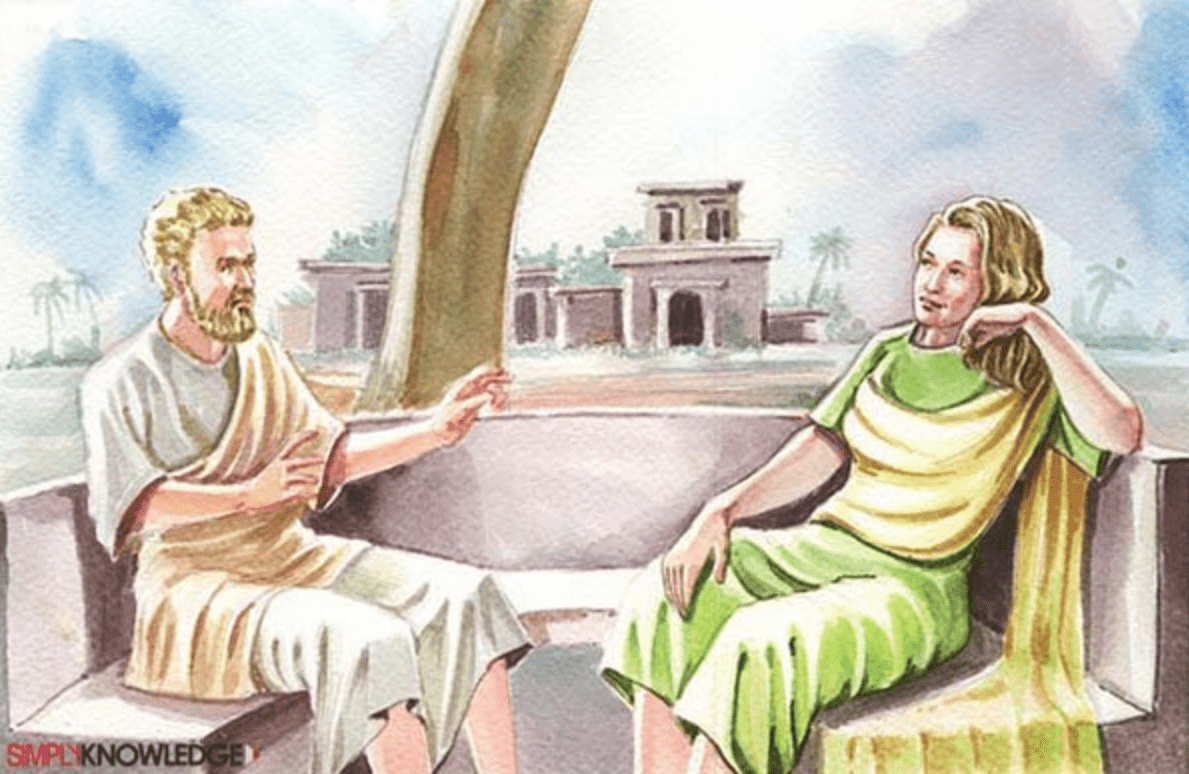Written by Ed Whalen, Contributing Writer, Classical Wisdom
Many women have made an important contribution to philosophy, and one of the most famous—or indeed infamous—female philosopher is Hipparchia (fl. 300 B.C.). Married to a leading Cynic philosopher, Hipparchia greatly contributed to the development of Cynicism and helped popularize it in the Classical World.

What Were The Teachings Of The Cynics?
One of the founders of Cynicism was Diogenes of Sinope, who infamously lived in a barrel. Cynics sought ‘peace of mind’ by living according to nature. They rejected contemporary civilization and society and also all comforts and amenities. Living a natural life was the only way to live ethically because they believed that civilization was corrupt. They taught that humans only needed the basics required for survival.
Cynics abandoned all material possession and only wore simple clothes and begged for their food, mocking those who lived a conventional lifestyle, especially the rich. They aimed to live their philosophy, and in so doing teach people to live in accordance with nature. Many believe they influenced the development of Stoicism.
Hipparchia’s Life
Hipparchia was born sometime between 340-320 BC. Her family hailed from Maroneia, which is in Thrace, and were members of the local aristocracy. According to ancient sources, which may have sensationalized her life, she refused to conform and was something of a rebel. Her younger brother Metrocles was sent to Athens to study rhetoric and philosophy. He became attracted to the Cynic school and introduced his sister to it. Hipparchia embraced their doctrines.
Around this time she came into contact with Crates, an Athenian, who is widely seen as one of the greatest of all the cynic thinkers. Hipparchia fell madly in love with Crates; she was completely enamored by mind and his physique. She demanded they marry, which was very unconventional. He was reluctant and he only agreed to marry her when she threatened suicide.

According to one source, the couple consummated their marriage in public, which was in keeping with the Cynics’ call to live naturally. The marriage was unconventional because, contrary to Greek norms, Hipparcia appeared with her husband in public and was very independent. She had several children with Crates and also managed the household.
Hipparchia also attended public debates and argued for the equality of the sexes. In many ways, she was a liberated woman in a society that was patriarchal and even misogynistic. It is believed she raised her children to live according to Cynic teachings, Her date of death is not known. She was famous in her own time, Diogenes urging her native city of Maroneia to change its name to Hipparchia in her honor.
The Philosophy Of Hipparchia
It is recorded that Hipparchia wrote many philosophical works, but they have all been lost. Indeed, almost all we know about this remarkable female philosopher comes from later Greek and Byzantine sources. It appears that Hipparchia helped to refine important aspects of Cynic thought.
She was known for her brilliant use of the rhetorical trope known in Greek as spoudogeloion. This was a syllogism that used humor to reveal some idea or argument and was often used to discredit conventional beliefs. Hipparchia used these to refute arguments about the natural inferiority of women.
The philosopher was also famous for her promotion of the Cynic concept of anaideia (shamelessness). The Cynics believed that shamelessness was necessary so that people could overcome conventions and live as natural as animals and birds. Hipparchia embodied the concept of anaideia, as she refused to act like a ‘respectable’ woman. A good example of her anaideia was when she won a debate and her opponent tried to strip her naked. She did nothing and was quite happy to be seen naked, which was contrary to all social norms. Hipparchia came to personify the Cynic doctrines and her commitment to poverty and a life of simplicity won her many admirers even among those who denounced the philosophies.
The Influence Of Hipparchia
Writers from her own time and later were fascinated by the female philosopher. She was an example for those who favored free-love and gender equality. She did a lot to promote the teachings of the Cynics.
Her views on the need to live in harmony with nature influenced Zeno of Citium, the founder of Stoicism. Zeno was reported to have praised the wife of Crates in one of his lost writings. The Stoic school went on to become tremendously influential in Hellenistic and later Roman civilization. The life and thought of Hipparchia has inspired female philosophers, especially in the 20th and 21st century.
A butterfly, Hipparchia, has been named in her honor.
Conclusion
Hipparchia proved that philosophy was not a male pursuit in the Classical World. The female philosopher made an important contribution to the development of Cynicism. She embodied the very essence of the teaching and she challenged the conventions of the time. She not only wrote philosophy but lived it—making her a unique figure in the history of ideas and civilization.
References:
Dudley, R. (1937), A History of Cynicism from Diogenes to the 6th Century A.D. Cambridge: Cambridge University Press












No comments
Trackbacks
Our apologies, you must be logged in to post a comment.